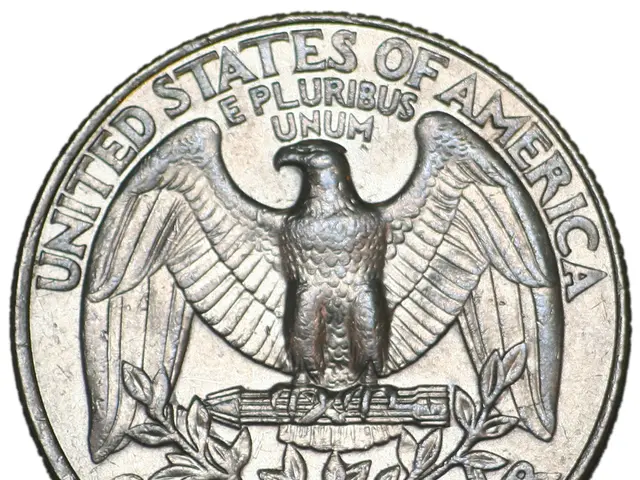Atrial Fibrillation Without Valves: Origin and Remedy
Atrial fibrillation (A-fib), a common heart condition affecting around 3 million people in the United States, is characterised by an erratic heart rhythm. This article aims to shed light on the key differences between valvular and nonvalvular A-fib, two types of the condition.
Valvular A-fib, which occurs in the presence of moderate-to-severe mitral stenosis (MS) or mechanical prosthetic heart valves, presents a higher clinical risk profile than nonvalvular A-fib. The main distinctions lie in definition, thromboembolic risk, anticoagulation strategies, and population differences.
Valvular A-fib, by definition, involves atrial fibrillation in the presence of specific valvular conditions. On the other hand, nonvalvular A-fib, as the name suggests, does not involve these conditions. The presence of these valvular issues increases the risk of thromboembolic events, such as stroke, for patients with valvular A-fib.
The difference in risk also impacts anticoagulation treatment approaches. Direct oral anticoagulants (DOACs) like apixaban (Eliquis) and rivaroxaban (Xarelto) are typically indicated for nonvalvular A-fib, whereas warfarin remains the standard for valvular A-fib patients with mechanical valves or moderate-to-severe mitral stenosis.
Valvular A-fib is often associated with rheumatic heart disease, more prevalent in developing countries, and tends to affect younger individuals compared to degenerative valvular disease seen in nonvalvular A-fib patients.
Nonvalvular A-fib can be managed through controlling the number of contractions, managing risk factors, and tailored treatment strategies. Managing risk factors such as taking medication as prescribed, limiting alcohol intake, reducing cholesterol levels, and regularly engaging in moderate exercise can help prevent and control nonvalvular A-fib.
Treatment for A-fib varies according to specific symptoms and heart health. Medical procedures for treating nonvalvular A-fib include electrical cardioversion, catheter ablation, Maze procedure, pacemaker with atrioventricular nodal ablation, and surgery usually accompanies these procedures.
Lifestyle changes recommended for people with A-fib include reducing salt intake, having a healthful diet, reducing stress, limiting alcohol intake, treating sleep apnea, and the impact of caffeine on A-fib is still uncertain. Doctors may prescribe medications for rate control, rhythm control, and blood thinning to prevent clots and reduce stroke risk.
It is important to note that the term 'nonvalvular' A-fib is no longer in use by the American Heart Association (AHA) and other organisations. However, the key differences between valvular and nonvalvular A-fib remain significant in understanding the condition and its treatment.
[1] [American Heart Association. (2021). Atrial Fibrillation: Types, Causes, Symptoms, and Treatment. Retrieved from https://www.heart.org/en/health-topics/atrial-fibrillation/types-of-atrial-fibrillation] [2] [American College of Cardiology. (2021). 2021 ACC/AHA Guideline for the Management of Valvular Heart Disease. Retrieved from https://www.acc.org/guidelines/valvular-heart-disease/2021/dsc-executive-summary]
- Atrial fibrillation (A-fib) is a common heart condition that affects around 3 million people in the United States, characterized by an erratic heart rhythm.
- This article discusses the key differences between valvular and nonvalvular A-fib, two types of the condition.
- Valvular A-fib, present in the presence of moderate-to-severe mitral stenosis or mechanical prosthetic heart valves, presents a higher clinical risk profile than nonvalvular A-fib.
- The main distinctions lie in definition, thromboembolic risk, anticoagulation strategies, and population differences.
- Valvular A-fib, by definition, involves atrial fibrillation in the presence of specific valvular conditions.
- Nonvalvular A-fib, on the other hand, does not involve these conditions.
- The presence of these valvular issues increases the risk of thromboembolic events, such as stroke, for patients with valvular A-fib.
- The difference in risk also impacts anticoagulation treatment approaches.
- Direct oral anticoagulants (DOACs) like apixaban (Eliquis) and rivaroxaban (Xarelto) are typically indicated for nonvalvular A-fib, whereas warfarin remains the standard for valvular A-fib patients with mechanical valves or moderate-to-severe mitral stenosis.
- Valvular A-fib is often associated with rheumatic heart disease, more prevalent in developing countries, and tends to affect younger individuals compared to degenerative valvular disease seen in nonvalvular A-fib patients.
- Nonvalvular A-fib can be managed through controlling the number of contractions, managing risk factors, and tailored treatment strategies.
- Managing risk factors such as taking medication as prescribed, limiting alcohol intake, reducing cholesterol levels, and regularly engaging in moderate exercise can help prevent and control nonvalvular A-fib.
- Treatment for A-fib varies according to specific symptoms and heart health, with medical procedures for treating nonvalvular A-fib including electrical cardioversion, catheter ablation, Maze procedure, pacemaker with atrioventricular nodal ablation, and surgery usually accompanies these procedures.
- Lifestyle changes recommended for people with A-fib include reducing salt intake, having a healthful diet, reducing stress, limiting alcohol intake, treating sleep apnea, and the impact of caffeine on A-fib is still uncertain.








